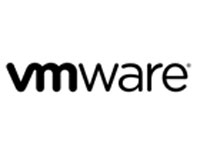VMware Recent Interview Questions – Part 3
In this post we are sharing all the recent VMware Interview Questions with Answers-
1. How you rate yourself into VMware skills?
It depends on how much experience you have, how much you are strong with subject. Basically, you can mention like 6-8. If you are full expertise with all the features/components then you can mention above 8.
2. On which component do you work daily in your organization?
Depends up on answer, you will get different Questions
Example: Mostly I will work on virtual machine and then we got the below couple of questions
3. What’s the use of vmxf file?
Additional virtual machine configuration files, If this file is not available we are unable to increase any resources to the VM
4. What is the swap file?
Swap file is virtual memory for Virtual machine and .vswp is the name of swap file
5. When you are able to see the swapfile?
A swap file is created by the ESXi host when a virtual machine is powered on. If this file cannot be created, the virtual machine cannot power on.
6. What’s the maximum swap file size in vSphere 5.5?
Maximum Swap files size in vSphere 5.5 is 1TB, but varies for different virtual machines
Normally it would be Swap file size= Allocated memory-Reservation of that VM
7. You are unable to power on Virtual machine, what you will do?
It depends up on the error, we will work to resolve the issue.
These are the considerations:
- Datastore doesn’t have space for virtual machine swapfile
- The virtual machine monitor may be asking a question to be answered during startup. A virtual machine may pause the power-on task at 95% to obtain additional information from the administrator.
- Licensing requirements are not meeting to power on virtual machine
- Don’t have Sufficient resources to satisfy HA Admission Control Policy
- A file required for starting the virtual machine, such as a virtual disk or swap file, may be unavailable or missing.
- Sufficient permission’s doesn’t have to power on the Virtual machine
- The virtual machine may have been previously suspended and making use of CPU features which are unavailable or incompatible with the CPU features available on this host. The virtual machine cannot be started without the required features.
- If its 64 Bit virtual machine, we need to enable Intel VT-X or AMD RVI
- If the virtual machine does successfully power on, but the guest OS doesn’t start correctly, there may be an incompatibility between the virtual hardware and drivers within the guest OS. For example, a missing SCSI driver may be required for booting.
- If the guest OS, or a driver or application within the virtual machine experiences a problem during startup, the guest OS may become unresponsive.
- Lastly, we need to check vmware.log and troubleshoot depends up on it
8.What files will create when you are taking snapshot?
When we are taking the snapshot, it will create below 2 files
.vmsn file: It is a snapshot state file, which stores the exact running state of a virtual machine at the time you take that snapshot.
–delta.vmdk file: It is a snapshot disk file. It is also known as the redo-log file. A delta file will be created for each snapshot that you create for a VM.
These both files are automatically deleted when the snapshot is deleted. Below file is always available in virtual machine folder
.vmsd file: It is used to store metadata and information about snapshots such as the snapshot display name, unique identifier (UID), disk file name, etc. Initially this file size is 0 byte until you create first snapshot of a VM and later it will grow whenever you are taking or removing the snapshots.
9. Can you expand the C drive capacity for virtual machine and Guest OS is Windows server 2008 R2?
Yes, we can expand it. First, we need to increase the required disk space in virtual machine. Second, logging to the machine and increase the capacity for C drive through disk management.
10. Did you decrease the disk capacity for virtual machine?
Interviewer just tests the confidence and how you are really working on these.
It won’t possible to decrease the disk space of virtual machine.
11.What’s the difference between vMotion and storage vMotion ?
vMotion is live migration of virtual machine from one ESXi host to another ESXi host, Where as storage vMotion is migrating the virtual machine from one datastore to another datastore
12. Can you do the vMotion between 2 datacenters?
No, vMotion will not work with different datacenters
13. What is the HA in VMware?
VMware vSphere HA is the “High Availability feature in cluster lever for failover purpose”. If one of the ESXi host goes down in a cluster, automatically all the virtual machines restarted to some another ESXi host in cluster.
14. Did you work with Physical to virtual(P-V) Machine conversions?
Depends up on answer you will expect next questions
If you say Yes then interview asked the next couple of questions related with P-V
15. What are the per-requisites to do the P-V?
- We need to check the VMware converter version and whether it is compatible for source OS
- We have to logging into the machine as administrator account
- Disable the antivirus and firewall on source machine
- f the source is Microsoft Exchange, SQL, or other database server. We need to stop the application related services Disable the real-time antivirus scanning during the conversion.
- Confirm that the source has 200 MB of free disk space on its system volume. This space is required to operate the disk snapshot features in Converter.
- If the NIC on the source machine is compatible with TOE (TCP Offload Engine), you need to disable it by running this command in a command prompt on the source machine:
netsh int tcp set global chimney=disabled
16. If P-V fails at 60%, what you will do?
We need to troubleshoot the source machine side depends up on the error.
17. When you are starting next time P-V, is it start from 1% or from 60% ?
It will always start from 1%
18. How you rate your communication skills?
It depends upon your skills (Fluency, Accent and grammar), For example you can mention between 5-8
19. How many Virtual machines you have in your environment?
It depends up on your client-to-client and environment-to-environment.
For Example we can mention approximately we have 4000 virtual machines.
20. What’s the VCB? Do you have any experience?
It is the VMware consolidated backup tool for backup virtual machines.
You can mention like don’t have any experience as VMware came with new tool like VDP(VMware Data Protection) with vSphere 5.1


Can we do vmotion between 2 datacenter?
Yes we can do VMmotion.when it is in power OFF mode.